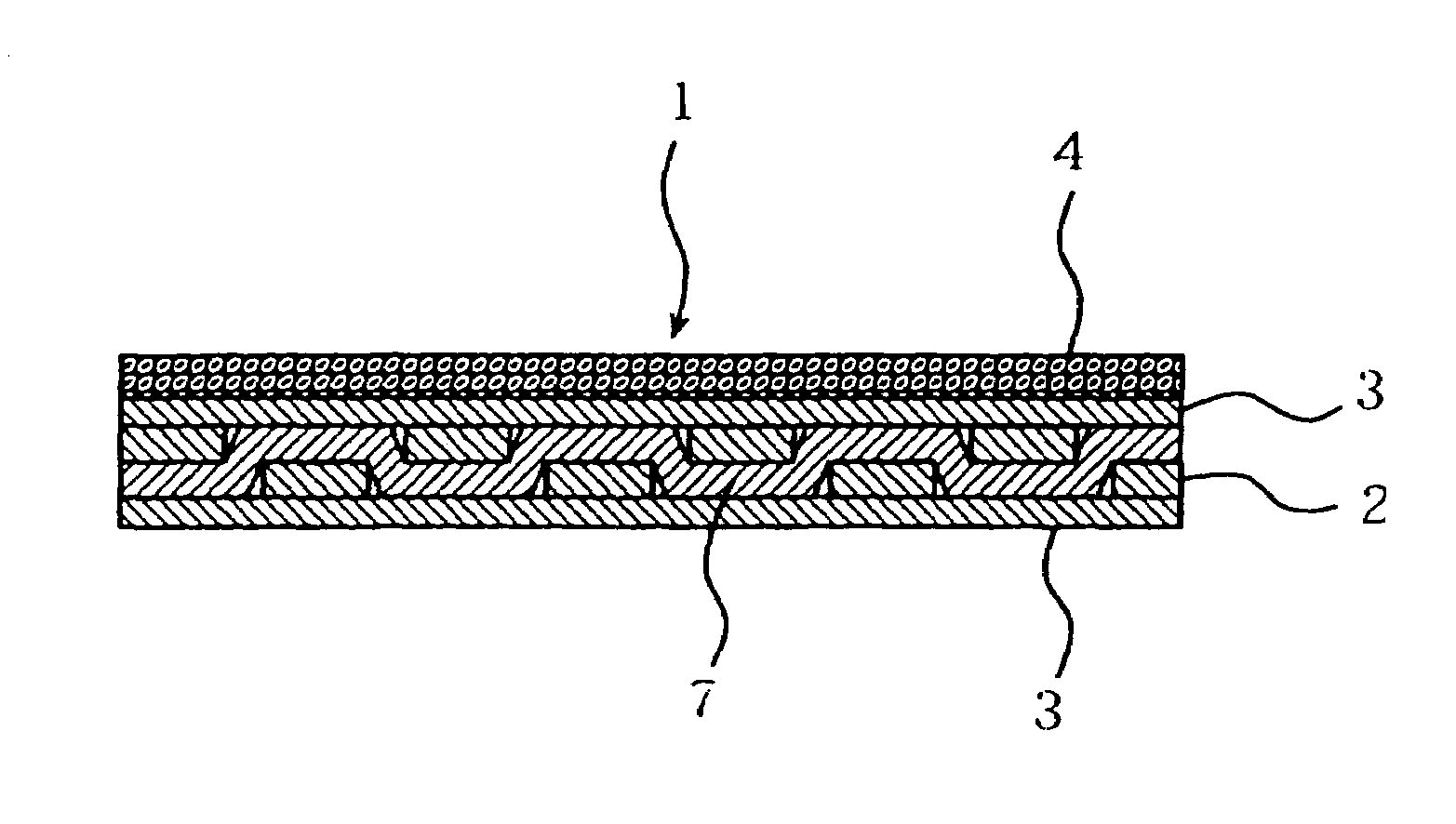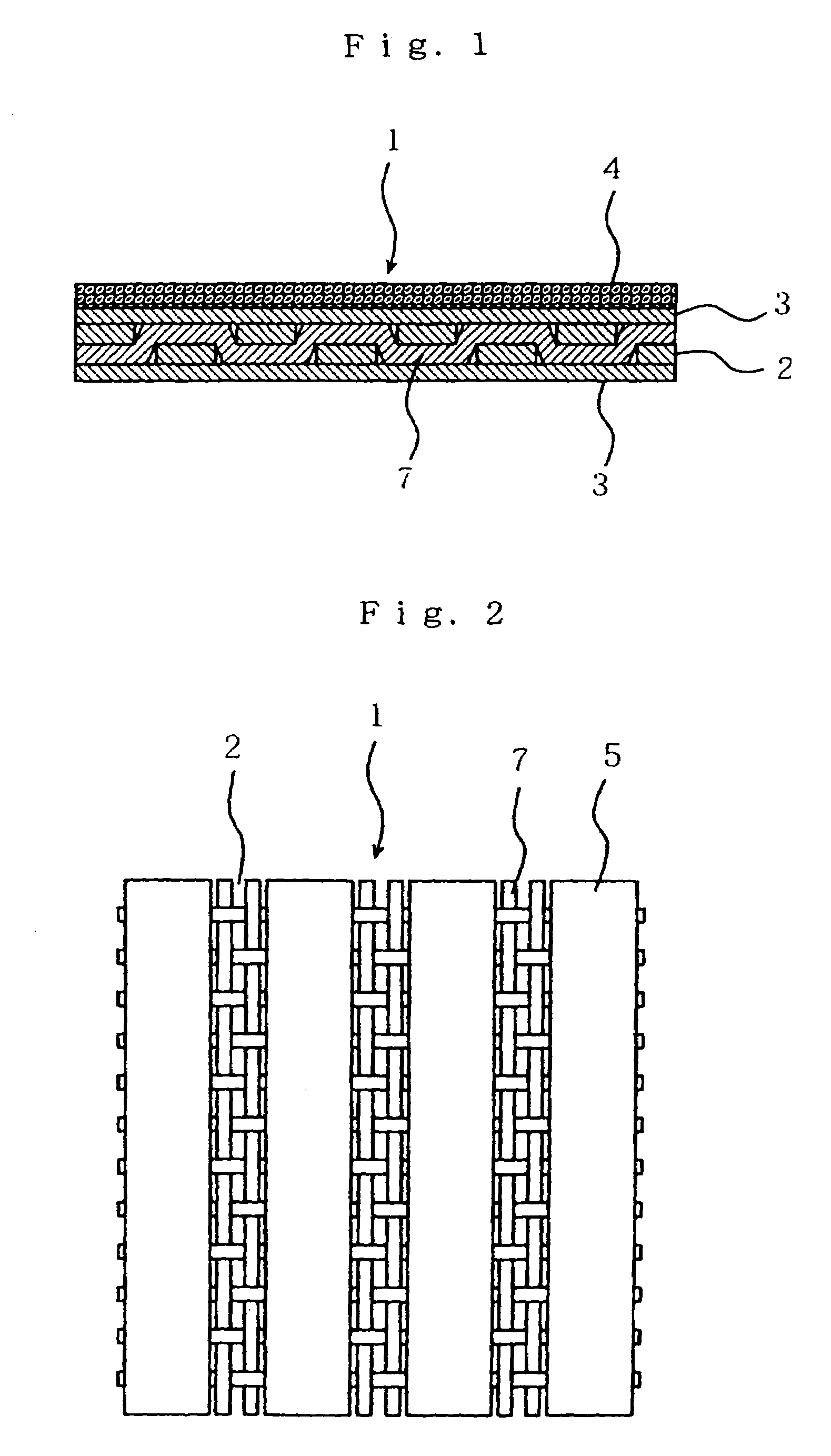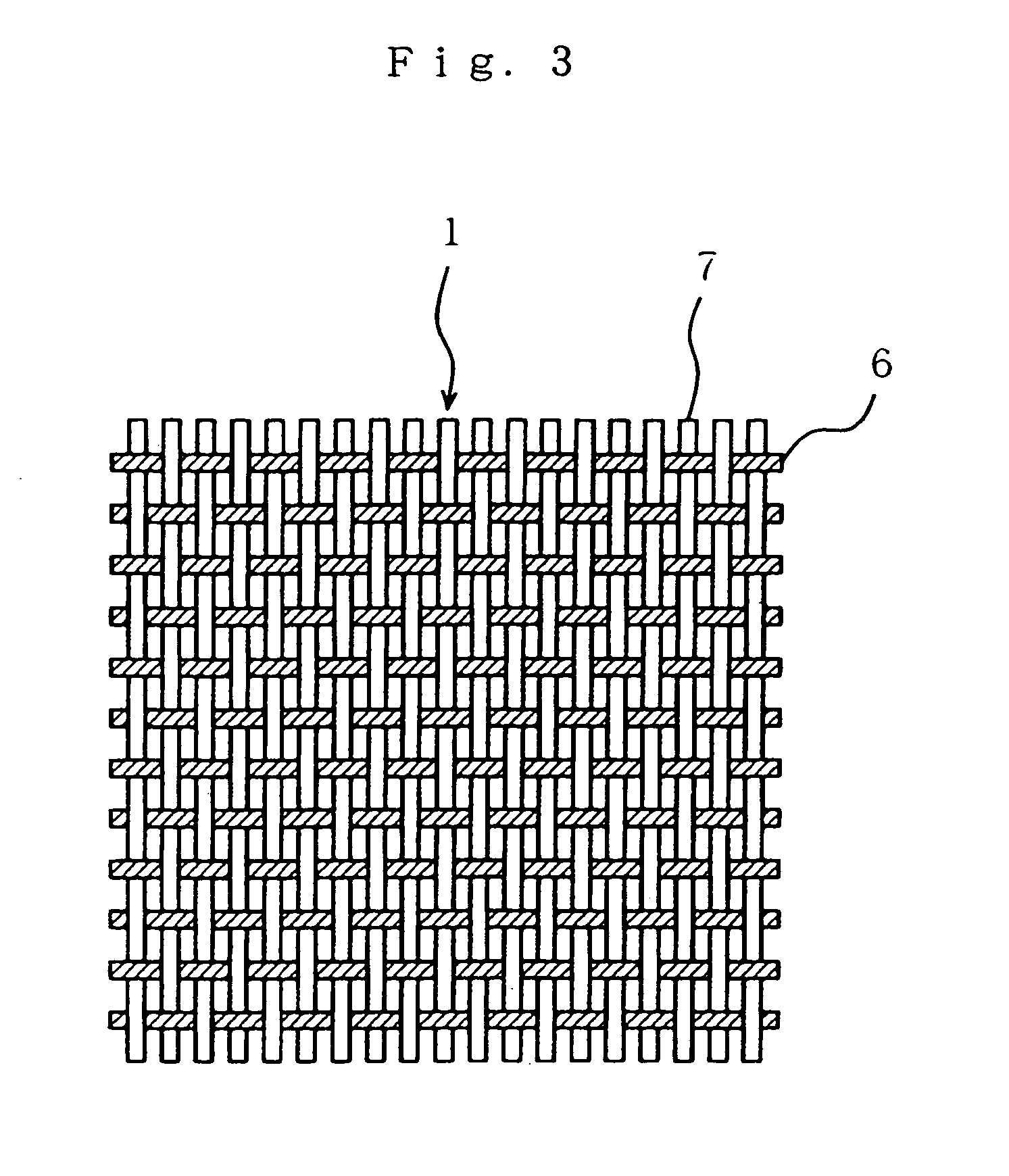Light shielding sheet
a technology of light shielding and sheet metal, applied in the field of light shielding sheet metal, can solve the problems of reducing mechanical properties, containing light-absorbing pigments, and reducing productivity, and achieve the effect of light weigh
- Summary
- Abstract
- Description
- Claims
- Application Information
AI Technical Summary
Benefits of technology
Problems solved by technology
Method used
Image
Examples
example 1
[0054]In order to form a white film 4, 6% by weight of polybutylene terephthalate (melting point: 223° C.) and 2% by weight of titanium oxide were blended to polypropylene (MFR=2.0 g / 10 minutes, density=0.90 g / cm3) and the mixture was melt extruded into a sheet form by an extruder to form a 1.0 mm thick sheet. This sheet was 5-time stretched by a roll stretcher in the longitudinal direction at a roll temperature of 135° C. and then was 5-time stretched by a tenter stretcher in the transverse direction to form a 40 μm-thick white film 4. This white film 4 had a whiteness of 88 as measured by the ASTM-E313 method and a light transmission of 32% as measured by the ASTM-D1003 method.
[0055]On the other hand, a film was produced from polypropylene (MFR=2.0 g / 10 minutes, density=0.90 g / cm3) by inflation method using an extruder. This film was slit into a width of 18 mm and then stretched with a drawing ratio of 6 times by hot rolling to yield a flat yarn 7 with a size of 1000 dt. Using thi...
example 2
[0057]A light-shielding material for agricultural use and horticultural use was obtained by forming a light-shielding sheet 1 in the same manner as Example 1 except that a 50 μm-thick white film having an expansion ratio of 1.1 was obtained by blending 1% by weight of azodicarbonamide to a low density polyethylene (MFR=1.0 g / 10 minutes, density=0.922 g / cm3), melt extruding the mixture into a sheet form by an extruder, and foaming the extrudate on heating. This white film 4 had a whiteness of 85 as measured by the ASTM-E313 method and a light transmission of 38% as measured by the ASTM-D1003 method. This light-shielding material for agricultural use and horticultural use was superior in light-shielding property, flexibility, handlability and durability and was employed suitably as a covering material for a vegetable cultivation house.
example 3
[0058]The white film obtained in Example 1 was cut into 20 mm-wide tapes 5, which were placed in parallel with a space of 10 mm on the base fabric obtained in Example 1. Lamination was conducted by sandwich lamination in the same manner as Example 1 to form a light-shielding sheet 1. Thus, a light-shielding material for agricultural use and horticultural use was formed (see FIG. 2). This light-shielding material for agricultural use and horticultural use was superior in light-shielding property, flexibility and handlability and was employed suitably as a covering material for an ornamental plant cultivation house.
PUM
| Property | Measurement | Unit |
|---|---|---|
| Fraction | aaaaa | aaaaa |
| Thickness | aaaaa | aaaaa |
| Width | aaaaa | aaaaa |
Abstract
Description
Claims
Application Information
 Login to View More
Login to View More - R&D
- Intellectual Property
- Life Sciences
- Materials
- Tech Scout
- Unparalleled Data Quality
- Higher Quality Content
- 60% Fewer Hallucinations
Browse by: Latest US Patents, China's latest patents, Technical Efficacy Thesaurus, Application Domain, Technology Topic, Popular Technical Reports.
© 2025 PatSnap. All rights reserved.Legal|Privacy policy|Modern Slavery Act Transparency Statement|Sitemap|About US| Contact US: help@patsnap.com



